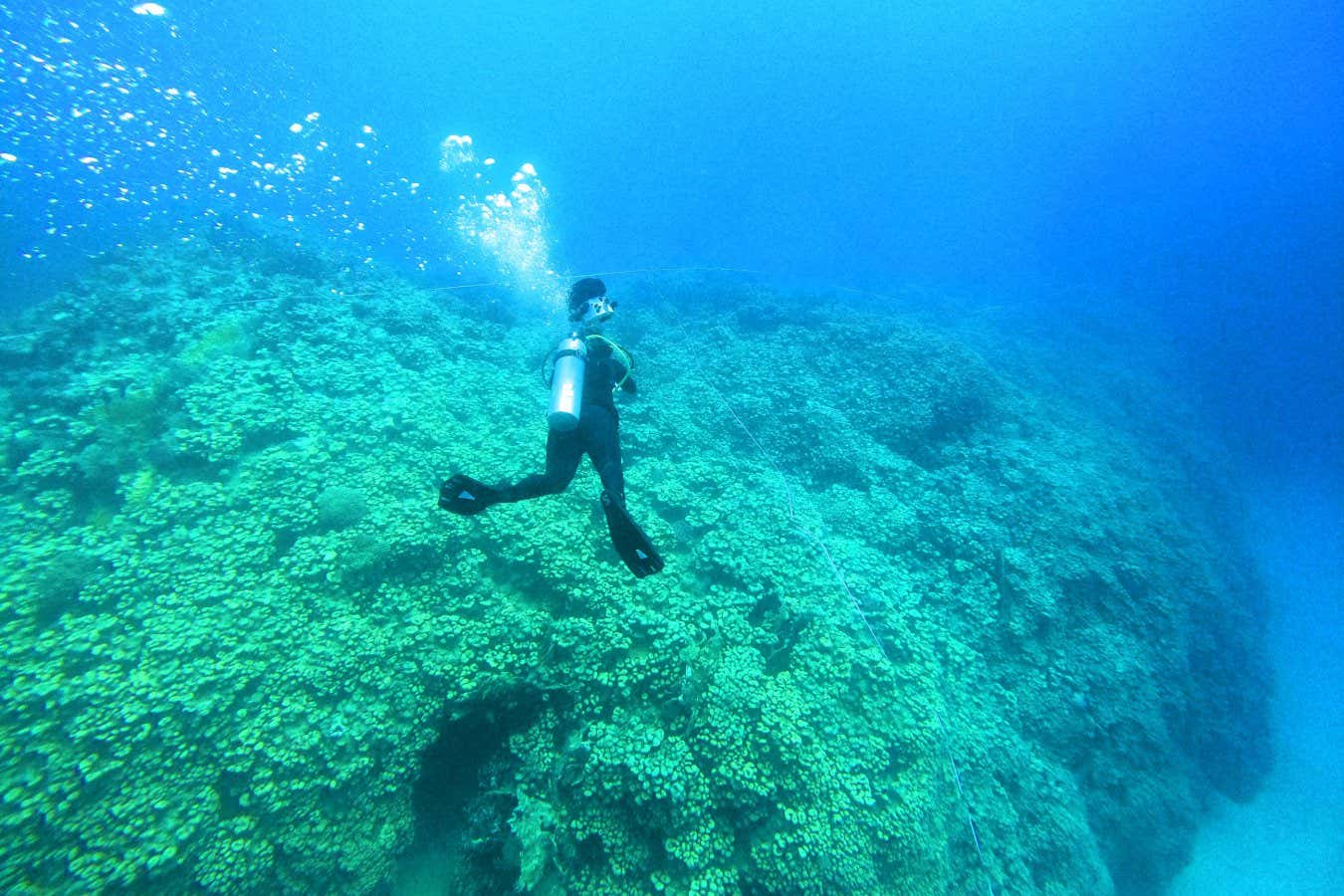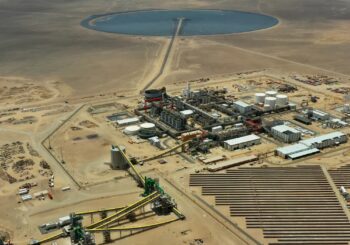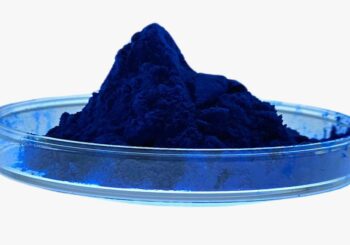Red Sea Global (RSG), the visionary developer behind the sustainable tourism projects the Red Sea and AMAALA, has revealed a major marine discovery. On 27 April 2025, the company announced the identification of an enormous coral colony belonging to the Pavona species , located within the vibrant waters surrounding AMAALA on Saudi Arabia’s northwestern shoreline.
Pavonas are small polyp stony (SPS) coras and are referred to as the Cactus, Potato Chip, or Lettuce Coral.
They Measure between 26 to 36 meters in length and 21 meters in width, almost double the size of a tennis court. The Red sea’s extraordinary coral formation l rivals the current world record holder; A 32-by-34-meter colony found in the Pacific Ocean. It is the largest Pavona coral colony ever documented in the Red Sea.
In a statement released by RSG, the company indicated that this extraordinary natural formation could serve as a major attraction for divers visiting AMAALA. It offers an unparalleled and memorable underwater experience. Visitor access would be carefully managed in accordance with RSG’s commitment to responsible tourism, ensuring the coral’s protection while allowing guests to admire the stunning marine life of the Red Sea with minimal environmental impact.
“The discovery of a coral of such extraordinary dimensions demonstrates the ecological significance as well as the pristine beauty of the Red Sea,” said Ahmed Alansari, RSG’s Head of Environmental Protection and Regeneration in a press release by the company.
Alansari added that RSG views the protection of coral reefs as an essential priority. These massive coral structures serve as living records, offering invaluable insights into historical oceanographic changes and helping scientists better predict how marine environments might respond to future challenges.
“Understanding how this coral has survived for so long will be crucial for protecting other reefs in the Red Sea and potentially all over the world, for generations to come,” stressed Alansari.
RSG further explained that determining the age of these enormous coral formations presents a challenge, given that the most accurate dating methods are “invasive” and no published growth rates exist for this species in the Red Sea.
However, scientists have estimated the coral’s age by analyzing its size, applying growth rates observed for similar corals in the Pacific, and using advanced photogrammetry, where 3,000 images were stitched together to create an accurate 3D model. Based on these methods, the coral colony is believed to be between 400 and 800 years old, potentially older than the world’s largest known coral in the Solomon Islands, which is estimated at 300 to 500 years.
They added that if the higher estimate proves accurate, the coral would have begun growing during the era of Genghis Khan’s invasions of China, the emergence of early Islamic states in Southeast Asia, and the signing of the Treaty of Paris ending the First Hundred Years’ War.
RSG also highlighted that Red Sea corals are especially resilient, having adapted genetically over centuries to survive in naturally warmer, saltier waters, a rarity comparable to encountering a white rhino in the wild.
This newly discovered coral will be the focus of ongoing studies by researchers from RSG and King Abdullah University of Science and Technology (KAUST), aiming to better understand the factors behind its resilience and to guide future coral conservation efforts both in the Red Sea and around the globe.
Two scientists behind the discovery of the massive coral colony, Rhonda Suka and Sylvia Jagerroos, are now spearheading efforts to map and document the formation. Ms. Suka described the experience of finding such a rare specimen as “mind-boggling,” adding that the colony’s remarkable resilience offers hope for the continued survival of Red Sea corals in the face of mounting environmental and human pressures.
Ms. Jagerroos compared the discovery to encountering a northern white rhino in the wild, knowing they exist but rarely ever seeing one, emphasizing just how extraordinary such a find truly is.
The statement also noted that mapping these giant coral structures is a crucial step toward their protection. This work forms part of the global “Map the Giants” initiative, which aims to identify and document all coral formations larger than five meters. This newly discovered colony marks the second submission from RSG to the project in recent months.
RSG explained that meanwhile, AMAALA s a luxury tourism destination being developed along the Red Sea coast in northwestern Saudi Arabia and located in the Prince Mohammed bin Salman Natural Reserve , where the coral was found, is preparing to welcome its first guests later this year. Designed to become the world’s most comprehensive health and wellness retreat, AMAALA will launch with more than 1,400 rooms spread across eight luxury resorts, featuring leading global wellness operators offering tailored lifestyle and well-being programs. This follows the success of RSG’s other project, The Red Sea, which opened to visitors in 2023 and now boasts five operational hotels.








Comments (0)